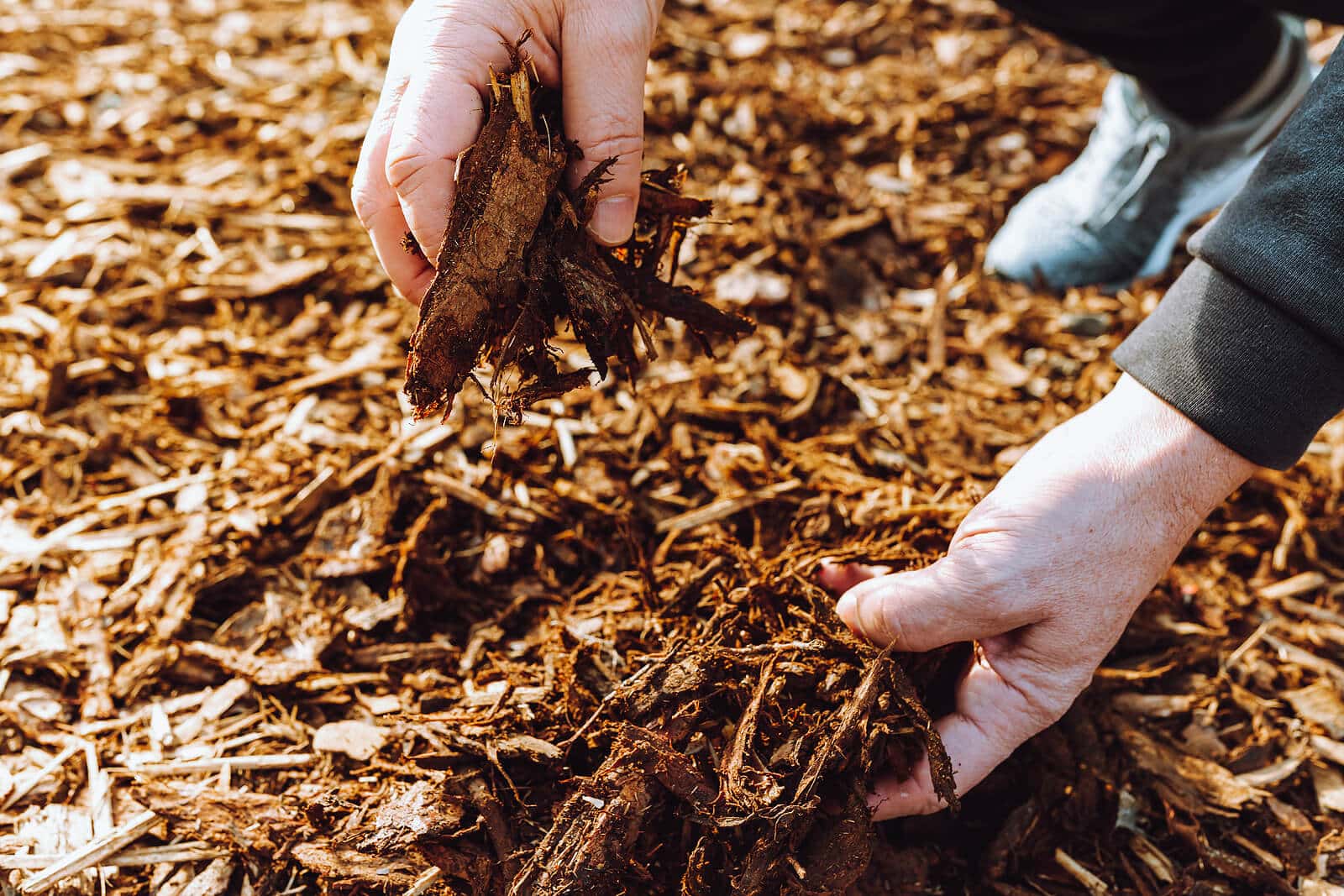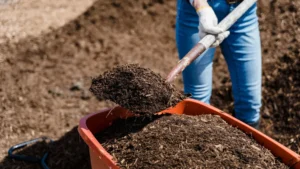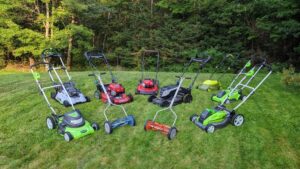A mulch calculator is an essential tool for homeowners and landscapers that simplifies the process of estimating the amount of mulch needed for a specific area. By inputting the dimensions of the space—length, width, and desired depth—users can quickly determine how much mulch to purchase, whether in bags or bulk. This not only helps in making informed purchasing decisions but also ensures proper coverage for effective weed suppression, moisture retention, and soil temperature regulation. Ultimately, a mulch calculator streamlines landscaping projects, saving time and money while enhancing the overall health and appearance of gardens and outdoor spaces.
Mulch Calculator
Enter the dimensions of your area, the depth of mulch you want, and select your bag size.
| Length (feet): | |
| Width (feet): | |
| Depth (inches): | |
| Bag Size (cubic feet): | |
| Required Bags: | 0 bags |
| Required Cubic Yards: | 0 cubic yards |
Mulch Calculator: A Comprehensive Guide
Mulching is an essential part of landscaping and gardening. Whether you’re aiming to conserve moisture, reduce weeds, or enhance the aesthetic appeal of your garden, mulch plays a significant role. However, determining how much mulch you need can be tricky. That’s where a mulch calculator comes in handy. In this guide, we’ll explore different types of mulch calculators, such as those offered by Lowe’s, bag-based calculators, and yard calculators, and how to apply them to your specific project.
1. Mulch Calculator at Lowe’s
Lowe’s, one of the leading home improvement retailers, offers a convenient and user-friendly mulch calculator on their website. The mulch calculator at Lowe’s simplifies the process of estimating how much mulch you’ll need for your landscaping or gardening project. Here’s a step-by-step guide on how to use the Lowe’s mulch calculator and why it’s a reliable tool for your mulching needs.
Features of the Lowe’s Mulch Calculator
Lowe’s mulch calculator is designed to give you accurate estimates based on your specific requirements. It allows users to input the dimensions of the area they wish to cover and the desired depth of mulch. This tool is particularly useful for DIY homeowners and professional landscapers alike.
The calculator offers several types of mulch, including:
- Pine bark mulch
- Cedar mulch
- Rubber mulch
- Wood chips
- Compost mulch
Each mulch type has its unique properties, and choosing the right one depends on factors such as the type of plants in your garden, the climate, and aesthetic preferences. By selecting the mulch type and entering the area dimensions, the calculator provides an estimate in both bags and cubic yards, making it easy to decide whether to purchase bagged mulch or opt for bulk delivery.
Steps for Using the Lowe’s Mulch Calculator
- Measure Your Space: Start by measuring the length and width of the area you want to mulch. If your space is irregularly shaped, you can break it down into smaller, manageable sections.
- Enter the Measurements: Input these dimensions into the calculator. Most tools will ask for square footage, but some also allow for direct entry of length and width.
- Select Mulch Depth: Choose the desired depth of mulch, usually between 2 and 4 inches for most landscaping projects.
- Mulch Type Selection: Pick the type of mulch you want to use from the drop-down options provided.
- View Results: The calculator will give you an estimate of how many bags or cubic yards of mulch you’ll need based on your inputs.
Advantages of Using the Lowe’s Mulch Calculator
- Accuracy: The calculator provides an accurate estimate, ensuring you don’t over-purchase or under-purchase mulch.
- Convenience: Available online, it can be accessed from any device, allowing you to plan your project from anywhere.
- Multiple Options: It helps you decide whether to purchase mulch in bulk (by cubic yards) or in smaller quantities (by bags).
By taking the guesswork out of how much mulch you need, the Lowe’s mulch calculator simplifies the shopping process, ensuring that your project is both cost-effective and efficient.
2. Mulch Calculator for Bags
Mulch is often sold in bags, which are convenient for smaller projects. When using bagged mulch, it’s important to calculate how many bags you’ll need to cover a particular area. The size of the mulch bag and the coverage area it offers are key factors in determining the total number of bags required.
Understanding Bag Sizes
Mulch typically comes in bags measured by cubic feet, with the most common sizes being:
- 2 cubic feet per bag
- 3 cubic feet per bag
The number of bags you need depends on the coverage area of the mulch. A 2-cubic-foot bag generally covers about 12 square feet at a depth of 2 inches, while a 3-cubic-foot bag covers about 18 square feet at the same depth. However, the depth of the mulch plays a crucial role in determining how many bags are required. A thicker layer of mulch will require more bags to cover the same area.
Calculating Mulch for Bags
To calculate the number of bags required, follow these steps:
- Measure Your Area: Start by measuring the area where you intend to spread mulch.
- Select the Depth: Decide on the depth of the mulch. A depth of 2-3 inches is standard for most garden beds, but areas with high foot traffic or areas prone to erosion may require more.
- Determine Coverage per Bag: A standard 2-cubic-foot bag covers 12 square feet at 2 inches deep. Use this as a guide to determine how many bags you’ll need for your project.
- Use a Calculator: Many online mulch calculators allow you to input the size of your area and the bag size to determine the total number of bags required.
For example:
If you have a 300 square foot garden bed and plan to apply mulch 2 inches deep, you can calculate as follows:
$$[\frac{300 \, \text{sq. ft.}}{12 \, \text{sq. ft. (coverage per bag)}} = 25 \, \text{bags of mulch}]$$
This assumes you’re using 2-cubic-foot bags. If you’re using 3-cubic-foot bags, the number of bags decreases.
Why Choose Bagged Mulch?
- Ease of Transport: Bags are easier to handle and transport, especially for small to medium projects.
- Reduced Waste: Since you’re buying in smaller quantities, there’s less chance of excess mulch.
- Variety of Types: Bagged mulch comes in many different colors, types, and textures, giving you more customization options for your landscaping project.
3. Mulch Calculator for Yard & Cubic Yard
If you’re tackling a larger project, like a commercial landscaping job or a large garden bed, buying mulch in bulk by the yard or cubic yard is often more economical. Understanding how to calculate mulch in cubic yards is essential for these larger projects, as it helps ensure you purchase the correct amount while avoiding overages or shortages.
What Is a Cubic Yard?
A cubic yard is a unit of volume, measuring 3 feet by 3 feet by 3 feet (or 27 cubic feet). This is a common measurement for bulk materials like mulch, soil, gravel, and sand. One cubic yard of mulch typically covers about 100 square feet at a depth of 3 inches.
Calculating Mulch in Cubic Yards
To calculate how many cubic yards of mulch you need, you can use this formula:
$$[\text{Cubic Yards} = \frac{\text{Length (in feet)} \times \text{Width (in feet)} \times \text{Depth (in inches)}}{324}]$$
The constant 324 comes from converting cubic feet to cubic yards. This formula is helpful for estimating large areas.
For example:
- For a 500-square-foot area that you want to cover with 3 inches of mulch, the calculation would look like this:
$$[\text{Cubic Yards} = \frac{500 \times 3}{324} = 4.63 \, \text{cubic yards}]$$
This means you’d need about 5 cubic yards of mulch for your project.
Benefits of Bulk Mulch by Cubic Yard
- Cost Efficiency: Bulk purchases often cost less per cubic yard compared to buying individual bags.
- Convenience: Bulk deliveries are ideal for large-scale projects, eliminating the need to transport dozens of bags yourself.
- Eco-Friendly: Bulk mulch reduces plastic waste, as you won’t need individual bags for transport.
Most nurseries, garden centers, and home improvement stores like Lowe’s and Home Depot offer mulch by the cubic yard. You can arrange for it to be delivered directly to your site, saving time and effort.
4. Mulch Calculator Formula
If you want to calculate how much mulch you need without using an online tool, you can apply a simple formula. This is especially helpful if you want to quickly estimate the amount for irregularly shaped areas or prefer doing the math manually. The mulch calculator formula requires knowing the area and the desired mulch depth.
The Basic Mulch Formula
To calculate the amount of mulch in cubic yards, use the following formula:
$$[\text{Cubic Yards} = \frac{\text{Area (in square feet)} \times \text{Desired Mulch Depth (in inches)}}{324}]$$
Let’s break this formula down:
- Area: Measure the total square footage of the area to be mulched. If the area is irregular, divide it into smaller sections, calculate each section’s area, and then add them up.
- Depth: Mulch is typically spread at a depth of 2 to 4 inches, depending on the type of mulch and the purpose of mulching.
- Constant (324): This number converts your cubic feet into cubic yards, which is the standard unit for purchasing bulk mulch.
Example Calculation
If you have a 600-square-foot garden bed and you want to apply mulch at a depth of 3 inches, here’s how you calculate the mulch requirement:
- Multiply Area by Depth:
$$[600 \times 3 = 1800]$$ - Divide by 324 to convert to cubic yards:
$$[\frac{1800}{324} = 5.56 \, \text{cubic yards}]$$
In this case, you’d need approximately 6 cubic yards of mulch to cover the area.
5. Mulch Calculator for Square Feet
A mulch calculator designed for square footage is especially useful for small to medium-sized projects. Most home landscaping projects, such as mulching flower beds or around trees, require a square-foot-based approach.
Steps for Calculating Mulch in Square Feet
- Measure the Area: Use a tape measure to determine the length and width of the area you want to mulch. Multiply these two numbers to get the total square footage.
- For example, a flower bed measuring 10 feet by 5 feet would have an area of 50 square feet.
- Select Mulch Depth: Choose a mulch depth appropriate for your needs. Typically, 2-3 inches of mulch is sufficient to prevent weeds and retain moisture.
- Use a Mulch Calculator: Many mulch calculators allow you to enter your square footage and desired depth to estimate the total amount of mulch needed in both bags and cubic yards.
Manual Calculation Example
If you prefer calculating manually:
- For a 100-square-foot garden bed at a depth of 2 inches:
$$[\text{Cubic Feet of Mulch} = \frac{100 \times 2}{12} = 16.67 \, \text{cubic feet}]$$
Since 1 cubic yard equals 27 cubic feet, divide by 27 to get cubic yards:
$$[\frac{16.67}{27} = 0.62 \, \text{cubic yards}]$$
So, for 100 square feet at 2 inches deep, you’d need approximately 0.62 cubic yards of mulch. Multiply this by 2 if you plan to mulch at 4 inches deep.
6. How Do I Calculate Mulch?
To wrap up, let’s summarize the different ways to calculate mulch for various scenarios. Whether you’re using an online mulch calculator, estimating the amount of mulch bags, or calculating the volume in cubic yards, the key is to measure accurately and consider the depth of mulch you plan to use.
Quick Steps to Calculate Mulch
- Measure the Area: Determine the total square footage of the area to be mulched.
- Choose Mulch Depth: The depth will depend on your project—typically 2 to 4 inches.
- Decide Between Bags or Bulk: For small projects, bagged mulch is convenient. For larger projects, purchasing by the cubic yard is more cost-effective.
- Use the Appropriate Formula: Use the mulch calculator formula for cubic yards, or use an online tool for bag estimates.
- Adjust for Irregular Shapes: For irregularly shaped areas, break the area down into manageable sections, calculate the mulch for each, and sum the results.
Common Mistakes to Avoid
- Over-Estimating Depth: Applying too much mulch can suffocate plant roots and lead to rot.
- Under-Estimating Area: Incorrect measurements can leave areas uncovered or require last-minute trips to the store for more mulch.
- Ignoring Mulch Type: Different mulch types settle differently over time. For instance, wood mulch may decompose and compress faster than rubber mulch, requiring more frequent top-ups.
Frequently asked questions (FAQs) about mulch calculators
1. What is a mulch calculator?
Answer: A mulch calculator is a tool designed to help homeowners and landscapers estimate the amount of mulch needed for a specific area. By entering the dimensions of the space to be mulched, as well as the desired depth of the mulch, users can quickly determine how much mulch to purchase, whether in bags or bulk (cubic yards). This ensures efficient use of resources and minimizes waste.
2. How do I use a mulch calculator?
Answer: To use a mulch calculator, follow these steps:
- Measure the Area: Determine the length and width of the area to be mulched in feet. If the area is irregularly shaped, break it into smaller sections and calculate each section separately.
- Select Mulch Depth: Choose the desired depth for the mulch layer, typically between 2 to 4 inches.
- Input Data: Enter the length, width, and depth into the calculator. If using bags, select the bag size (usually 2 or 3 cubic feet).
- Calculate: Press the calculate button to get the estimated amount of mulch required in both bags and cubic yards.
- Review Results: The calculator will provide you with an estimate of how many bags to purchase or how many cubic yards are needed.
3. Why is it important to calculate the amount of mulch I need?
Answer: Calculating the right amount of mulch is important for several reasons:
- Cost Efficiency: Knowing how much mulch you need prevents overspending on unnecessary materials and avoids multiple trips to the store.
- Proper Coverage: An accurate calculation ensures that the mulch adequately covers the area, providing benefits like weed suppression, moisture retention, and temperature regulation for the soil.
- Avoiding Waste: By purchasing the correct amount, you minimize waste and reduce the environmental impact associated with excess materials.
4. What are the common types of mulch available?
Answer: There are several types of mulch, each with unique properties and benefits:
- Organic Mulch: Includes materials like wood chips, bark, straw, grass clippings, and compost. It improves soil quality as it decomposes but may need replenishing more frequently.
- Inorganic Mulch: Composed of materials like rubber mulch, gravel, or landscape fabric. These options do not decompose and typically require less maintenance, but they do not enrich the soil.
- Decorative Mulch: This includes dyed mulch or pebbles that enhance the aesthetic appeal of a garden while serving the same functional purposes.
5. How deep should I apply mulch?
Answer: The recommended depth for applying mulch is typically between 2 to 4 inches. Here’s a breakdown of common depths:
- 2 inches: Suitable for flower beds and gardens where plants need some exposure to sunlight and nutrients.
- 3 inches: Ideal for most landscaping projects, providing good weed suppression and moisture retention.
- 4 inches: Beneficial for areas with high foot traffic or where the soil is prone to erosion, as it offers additional protection.
However, applying too much mulch can suffocate plant roots and lead to rot, so it’s essential to adhere to recommended depths.
6. Can I use a mulch calculator for irregularly shaped areas?
Answer: Yes, you can use a mulch calculator for irregularly shaped areas by breaking the area down into smaller, manageable sections. Measure each section individually, calculate the mulch needed for each part, and then sum the results. This approach ensures an accurate estimate for your total mulch requirement, even for complex layouts.
7. How do I choose the right mulch for my garden?
Answer: When selecting mulch for your garden, consider the following factors:
- Plant Needs: Some plants thrive better with specific types of mulch. For instance, cedar mulch repels insects and is good for vegetable gardens, while pine bark is excellent for acid-loving plants like azaleas.
- Aesthetic Preferences: Consider the color and texture of the mulch to match your landscape design.
- Longevity and Maintenance: Organic mulches decompose over time, while inorganic mulches last longer but don’t improve soil quality.
- Cost: Evaluate your budget as some types of mulch can be more expensive than others.
8. What are the benefits of using mulch?
Answer: Mulch provides numerous benefits, including:
- Weed Suppression: A thick layer of mulch blocks sunlight, preventing weed seeds from germinating.
- Moisture Retention: Mulch helps retain soil moisture, reducing the frequency of watering.
- Temperature Regulation: It insulates the soil, protecting plant roots from extreme temperatures.
- Soil Improvement: Organic mulches break down over time, enriching the soil with nutrients.
- Aesthetic Appeal: Mulch enhances the visual appeal of your garden or landscape.
9. How often should I replace or replenish mulch?
Answer: The frequency of replenishing mulch depends on the type used and environmental conditions. Here are some guidelines:
- Organic Mulch: Typically needs to be replaced every year or every two years, as it decomposes and loses effectiveness.
- Inorganic Mulch: May last longer, but you should periodically check for compaction, color fading, or debris accumulation, especially in high-traffic areas.
- Monitoring Depth: Regularly check the depth of your mulch to ensure it remains at the recommended level, adding more as necessary.
10. Can I use leftover mulch for different projects?
Answer: Yes, leftover mulch can often be repurposed for various gardening and landscaping projects. Here are some ideas:
- Garden Paths: Use excess mulch to create decorative paths through your garden.
- Tree Rings: Apply leftover mulch around the base of trees to retain moisture and suppress weeds.
- New Beds: Use mulch in new garden beds or flower pots to enhance soil quality.
- Composting: If the mulch is organic and hasn’t been treated with chemicals, you can mix it into your compost pile for additional carbon content.
By understanding these aspects of mulch and how to calculate it accurately, you can optimize your landscaping efforts and enjoy a healthier, more beautiful garden.






